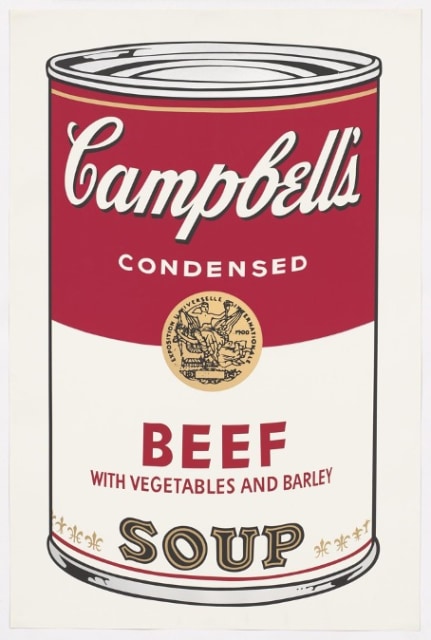Warhol moved to New York City at age 21 hoping to succeed as a commercial designer. His success was swift: Within days he was illustrating stylish women’s shoes for a spread in Glamour magazine, and by 1952 he had won his first of many industry awards. Vogue, Harper’s Bazaar, Bergdorf Goodman, Tiffany & Co., and Columbia Records are among the many prestigious firms that kept him flush through the 1950s.
As he courted clients on Madison Avenue and busily navigated the social geography of Manhattan’s fashion world and urbane gay community, Warhol continued making art. He developed a distinctive language of lively motifs—cherubs, butterflies, cats, shoes, food, elegant women, young men kissing—often collaborating with writers to produce artist’s books, which were among the many objects he’d gift to friends and colleagues over the years.
In his hunt to capture the look and feel of commercialized postwar America, Warhol began experimenting with the tools of mechanical reproduction, namely, the photo-silkscreening technique. He quickly invented what would become his signature style–a grainy black image printed repeatedly–in series, grids, rows, or pairs–on painted canvas often strikingly colored. It was a game-changing artistic breakthrough, for him and for future artists, legitimizing the commercial method for use in fine art.
In 1963, with his painting practice expanding, Warhol moved his studio from a rented firehouse to a fifth-floor loft on East 47th Street that once housed a hat factory. He christened the space the Factory, covered all its surfaces in silver, and watched it morph into a hive of countercultural activity. Although infamous for its louche and drug-fueled parties, the Factory was the site of enormous creative productivity. Warhol purchased his first movie camera in 1963 and kept it rolling, innovating unprecedented genres of filmmaking, like the silent, moving portraits of his Screen Tests (1963–66) and the eight-hour single shot of Empire (1964), and inventing a new kind of celebrity, the untrained actor-turned-Superstar.
